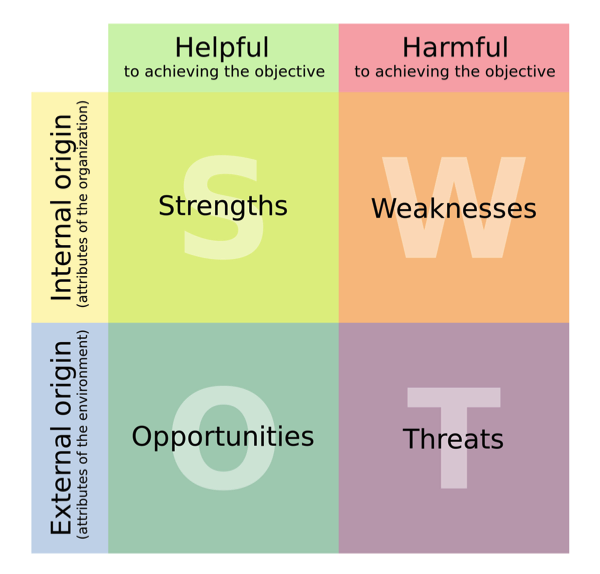Welcome to Selecting the Best Solution
"A problem is a chance to do your best"— Duke Ellington
We have a design problem in hand - and a smorgasbord of solutions to choose from.
Now what?
On rare occasion, we will compare our design solutions one by one, to our design specification, and Voila! Only one will come out a clear winner, making our team's decision easy.
But, more often than not, we will run into a two-way, three-way, or other multi-way tie among multiple solutions where we must use a more sophisticated decision making or planning tool to pick among them. SWOT (strengths, weaknesses, opportunities, and threats) is one such planning tool that allows us to journey beyond the design specification for answers to selecting the best solution:
We have a design problem in hand - and a smorgasbord of solutions to choose from.
Now what?
On rare occasion, we will compare our design solutions one by one, to our design specification, and Voila! Only one will come out a clear winner, making our team's decision easy.
But, more often than not, we will run into a two-way, three-way, or other multi-way tie among multiple solutions where we must use a more sophisticated decision making or planning tool to pick among them. SWOT (strengths, weaknesses, opportunities, and threats) is one such planning tool that allows us to journey beyond the design specification for answers to selecting the best solution:

This module in the Basic Engineering Design Suite will take the student through selecting the best among several design solutions and then through the process of articulating the selected solution through a block diagram. The block diagram lays the big picture for the design and becomes a road map for many remaining steps in the engineering design cycle.
Learn more about Selecting the Best Solution
during the Engineering Design Cycle:
Presentation (.pdf) -- Choosing a Solution
Presentation (.pdf) -- Block Diagram
Audio Recording (Youtube) -- Choosing a Solution
Audio Recording (Youtube) -- Block Diagram
Assignment in MS Word (.docx) or Portable Document Format (.pdf)
Quiz in MS Word (.docx) or Portable Document Format (.pdf)
Select the best design… and move onward!
This suite of educational tools supports the Engineering Design Cycle, from beginning to end, in a way that allows the student to pursue open-ended engineering design from idea to prototype to redesign. These tools can be useful, for both teaching and learning, in a capstone design experience, other design classes, as well as in extracurricular or any other activities that involve formal design.
Explore More:
Overview
Identify the Problem
Research the Need
Design Solutions
Construct a Prototype
Test and Evaluate
Present the Solution
Redesign and Iterate
Acknowledgements:
This work was funded in part by the National Science Foundation (DUE-1245464). Any opinions, findings, and conclusions or recommendations expressed in this material are those of the author(s) and do not necessarily reflect the views of the National Science Foundation.
This work was funded in part by the National Science Foundation (DUE-1245464). Any opinions, findings, and conclusions or recommendations expressed in this material are those of the author(s) and do not necessarily reflect the views of the National Science Foundation.

